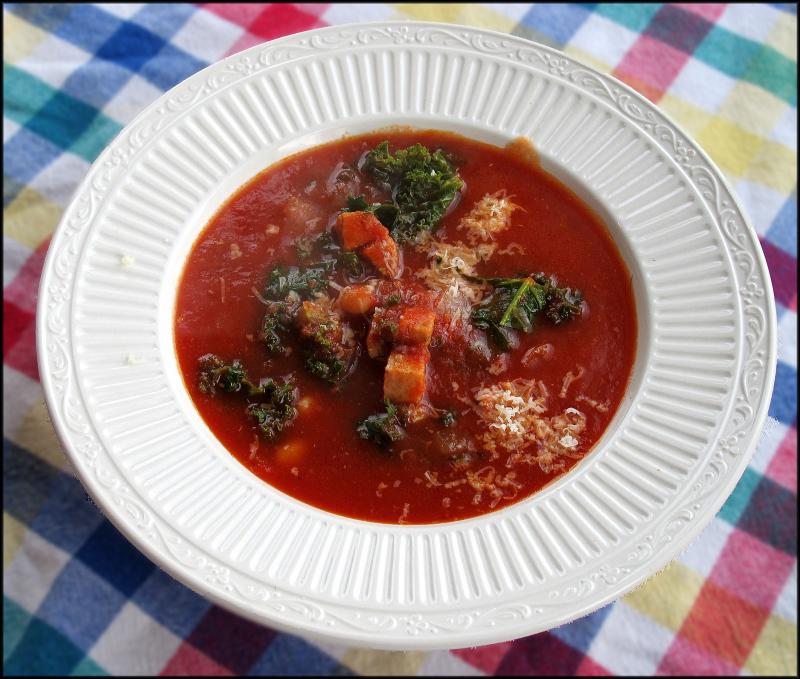Food writing appeals to more than the appetite
“What food publications do you read?” someone recently asked me. I admitted that I still missed Gourmet magazine and find Bon Appetit a bit cheeky, perhaps trying too hard to be on trend. The folks at Cook’s Illustrated give the best and most complete background stories on recipes, explaining why they tried different techniques or ingredients for the most successful version of a dish.
Saveur and Food & Wine are sometimes more about exotic travel destinations, while Fine Cooking tries to reach foodies interested in learning how to prepare beautiful food. Of course, there are any number of online recipe sites and food blogs. And, from time to time, The New Yorker magazine features an essay about cooking, most recently an entertaining treatise on The Many Lives of Roberto, a Soup.
Author Helen Rosner describes her surprise at the long-standing social media fame enjoyed by a soup she made several years ago. It’s a satisfying mixture of crushed tomato, white beans, sausage and kale that she and her husband enjoyed so many times, he announced it needed to have its own name, and Roberto was christened.
After she posted an email newsletter story in 2016 about the conversational approach to the structure of her recipe for Roberto, responses from readers continued unabated. Mostly through notifications on Instagram, Rosner receives updates on changes other cooks have made to the recipe and celebrates the way her creation continues to please.
I’ve included her original recipe for Roberto without maintaining the same format she used, but adhering to the more conventional recipe style. Rosner encourages alterations and substitutions in almost every step, including the beans (canned, fresh, or heirloom), sausage (Italian or vegetarian), greens (kale or spinach) and almost any type of canned tomatoes.
My favorite line in her recipe is this one: “Add the kale. The pot will look extremely full, but don’t worry – the kale will collapse like an empty wedding gown.”
And although she states the recipe yields two servings, we found it closer to six or eight, which may explain why she and her husband spent so much time with Roberto.
Each week, I read the Food sections in the Wilmington News Journal and the Washington Post, usually without discovering anything I’d like to make and often with some measure of disappointment about the overly complicated tehniques or odd ingredients (except for Ellie Kreiger, whose sensibilities I typically share).
Last week was the first article by the new Dinner in Minutes columnist, Ann Maloney, a transplant from one of my favorite places, New Orleans. She shared her perspective on a traditional Louisiana dish, shrimp étouffée. She explains the Cajun/Creole mirepoix (onion, celery and bell pepper) and describes the way the recipe enjoys as many variations as there are cooks.
The key feature of this dish is how swiftly it comes together once the basic sauce has been assembled. Her writing style gives newcomers an easy introduction to the art of making roux (equal parts of fat and flour, cooked together until rich brown in color), a staple of New Orleans kitchens. I have made this dish a number of times from a slightly different recipe, but include Maloney’s recipe here.
She is adamant about avoiding the addition of tomato or broth, using the moisture from the cooking shrimp to provide sufficient liquid. The finished product is usually served over rice, but you can substitute riced cauliflower or quinoa for a lower-carb option. I’m definitely looking forward to reading more of Maloney’s articles.
Roberto*
1 T olive oil
1 large onion
3 cloves garlic
1 lb hot Italian sausage
28-oz can crushed tomato
14-oz can great northern beans
1 C red wine
3 C beef broth
1 bunch kale
1/4 C grated Parmesan cheese
salt & pepper, to taste
1 lemon, quartered
Heat oil in a soup pot over medium. Dice the onion and add it to the pot, cook until translucent, about 5 minutes. Mince the garlic; add to the pot and cook briefly, about 1 minute. Remove the meat from the sausage casing; add to the pot, breaking it up into small pieces. Cook until well-browned, stirring often, about 10 minutes. Stem the kale and chop into bite-size pieces; set aside. Add the tomatoes and stir to combine. Drain the beans; stir into the soup. Allow to cook over medium until it reaches a simmer. Add the kale; cover the pot and reduce heat to medium-low. Cook until greens have wilted, about 5 minutes. Stir cheese into soup; season to taste with salt and pepper. Ladle soup into bowls and squeeze juice of 1 lemon quarter into each bowl. Yield: 4 to 6 servings. *Adapted from Helen Rosner in The New Yorker.
Shrimp Étouffée*
1/4 C olive oil
3 minced garlic cloves
1 large diced onion
1 diced celery stalk
1/4 C diced red bell pepper
3 diced scallions
2 T parsley
3 T butter
3 T flour
1 1/2 lbs peeled, deveined shrimp
1/4 t cayenne
1 t Creole seasoning
Heat the oil in a Dutch oven over medium until shimmering. Add the garlic and cook until fragrant, about 2 minutes. Stir in onion, celery, bell pepper, scallion and parsley. Cook until translucent, stirring often, about 10 minutes. Remove from heat and set aside. Melt the butter in a small pot over medium. Whisk in the flour and stir until smooth. Continue cooking, stirring often, until light brown, about 5 minutes. Remove from heat and continue stirring another minute or so. Add the roux to the vegetables and stir until incorporated. Return to medium heat; add shrimp, cayenne and Creole seasoning. Cover and simmer, stirring occasionally, until shrimp are curled and pink, about 10 minutes (do not overcook). Season to tase with additional cayenne and Creole seasoning. Serve over steamed rice. Yield: 4 servings. *Adapted from Ann Maloney in The Washington Post.

















































